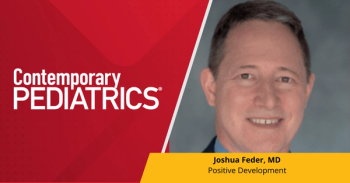
Transforming teen obesity care: How integrated specialty pharmacy models expand GLP-1 access
Experts discuss how specialty pharmacy partnerships dramatically improved GLP-1 access, adherence, and workflow efficiency for teens with obesity.
As GLP-1 receptor agonists reshape the landscape of adolescent obesity treatment, pediatric obesity specialists are working to ensure these therapies are safe, equitable, and accessible. In this Q&A, Thao-Ly Phan, MD, MPH, and Linhda Nguyen, PA-C, share insights from their research presented at Obesity Week 2025, including real-world impacts of GLP-1 medications, barriers to access, and how partnering with an integrated specialty pharmacy enabled dramatic improvements in prescription fulfillment, patient adherence, and workflow efficiency. Their perspectives reflect ongoing efforts to advance obesity care through collaborative models designed to support families, streamline insurance challenges, and improve long-term health outcomes for teens.
Q&A
Contemporary Pediatrics: Can you sum up the big picture of your research presented at Obesity Week 2025?
Thao-Ly Phan, MD, MPH:
When GLP-1 receptor agonists first became available for teens in 2020, we saw a transformative shift in obesity treatment. We now have more options to help teens who have not been able to move the scale with lifestyle changes alone. The benefits we’ve seen have definitely outweighed the risks. We’ve seen improvements in our patients’ physical health - cardiovascular risk, metabolic labs, and musculoskeletal pain. More importantly, we’ve seen improvements in their emotional health and quality of life. But that’s not to say that these medications are a magic cure. There are some patients who don’t respond, there are concerns about side effects and development of disordered eating, and so close monitoring and an interdisciplinary approach are essential when using these medications.
It is also essential that we make sure all teens have equal access to these transformative medications. In one of our studies, we found that only 56% of patients prescribed an obesity medication had their prescription filled, and that Hispanic patients were less likely to get the obesity medication they were prescribed. From a quality improvement standpoint, we are working tirelessly to make sure we are improving access to these medications. By partnering with Shields Health Solutions and our Nemours Specialty Pharmacy, we have been able to exponentially increase the number of GLP-1 prescriptions ordered and prescriptions filled at our Specialty Pharmacy year over year.
Moving forward, we must continue to advocate for insurance coverage and lower costs of these medications, insurance policies that are more transparent and easier to navigate, and more clinical support to ensure all patients are able to access these treatments and are seeing positive impacts on their health and wellbeing.
Contemporary Pediatrics: Can you tell us a little about your study presented at Obesity Week 2025? Including the reasoning behind it and a summary of the results?
Linhda Nguyen, PA-C: Our quality improvement project was aimed at improving the process of getting GLP-1 medications for our patients in the Nemours Healthy Weight and Wellness clinic. When these medications became available, we quickly realized there were many barriers to accessing these medications. We partnered with our hospital’s integrated specialty pharmacy to improve workflow so that our patients would get their medication in a timely manner. From 2023 to 2024, we had a 1057% increase in patients enrolled in specialty pharmacy services and a 1680% increase in prescriptions filled at our specialty pharmacy.
Contemporary Pediatrics: Your team achieved more than a 10-fold increase in GLP-1 prescriptions filled through the specialty pharmacy. What were the most impactful workflow changes that drove this improvement?
Nguyen: The changes we made were impactful because we made sure any workflow changes considered the needs of patients and families. For example, we initiated refill reminders and mail delivery options to make getting medications more convenient for families. We’ve also done a lot of work to improve communication with families. We’ve received feedback from families that they appreciate the prompt and detailed updates they receive from the specialty pharmacy about the process of getting the medicine, which empowers them to be a partner in their health care.
Contemporary Pediatrics: Prior authorization and insurance challenges are major barriers to GLP-1 access. How did the integrated specialty pharmacy model reduce these burdens for clinicians and families?
Nguyen: Prior authorizations take time to obtain, and there is a lot of variability in insurance requirements. Our integrated specialty pharmacy is a dedicated team of experts in navigating insurance requirements and obtaining prior authorizations. Through our partnership, they were able to take on this process for us so that clinicians could focus on doing what they do best – taking care of patients.
Contemporary Pediatrics: You reported a 95% medication adherence rate and a 2-day turnaround time for filled prescriptions. What elements of the specialty pharmacy partnership contributed most to this efficiency?
Nguyen: It really takes a dedicated team to make this work. When a prescription is placed in our electronic health record, our specialty pharmacy is alerted right away. This allows them to review insurance coverage and obtain any authorizations needed before the prescription is sent to any pharmacy for dispensing. This workflow helps us proactively address any insurance issues. Our specialty pharmacy also tracks refill needs and sends proactive reminders to clinicians and families to make sure patients get the medications they need in a timely manner.
Contemporary Pediatrics: Based on your findings, what steps should other pediatric obesity programs take if they want to adopt or partner with a specialty pharmacy—and what challenges should they anticipate?
Nguyen: Accomplishing this really involves true collaboration and partnership. It’s important for clinicians and specialty pharmacy teams to meet regularly, look at data, and see how they can continually improve processes to best meet the needs of patients. This does require dedicated staff and data analytics, but the pay-off of improved access and adherence to these medications is well worth it.
Newsletter
Access practical, evidence-based guidance to support better care for our youngest patients. Join our email list for the latest clinical updates.










